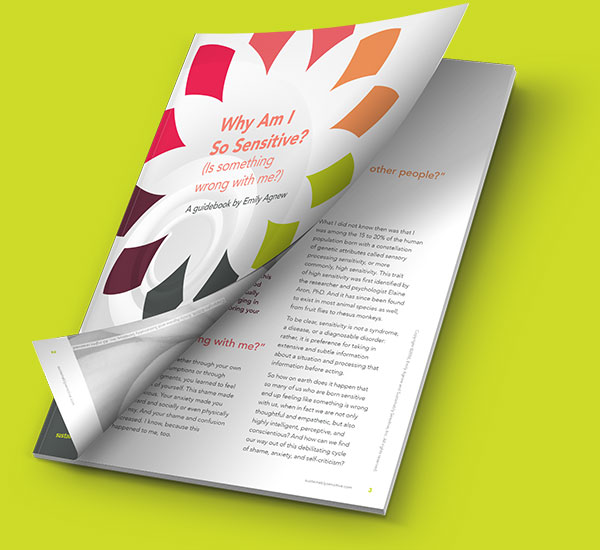A full system reset is a go-to resource for times when you are really stressed or exhausted.
When my stress level spikes—which has happened more often than usual, lately—I can usually restore my energy and presence of mind quickly. I just lie down and do a breath practice for 20 minutes.
Not this week. This morning, as I assessed my exhausted, frazzled state, I realized a short rest wasn’t going to do the trick. I needed something more. I took a cue from our foster cat, Chairman Whiskers. When I got up again—at lunchtime—my problems hadn’t magically disappeared, but I felt worlds better. I had shifted from exhausted and frazzled to rested and calm.
I’ve been through this process often enough that I have a name for it: a “full system reset.” You can reset your phone when it gets glitchy. Your highly sensitive nervous system responds in much the same way. That is, you can restore it to the state it was in the last time it was functioning well.
After all, the first step towards feeling better is to realize you aren’t feeling good. When you remember what it’s like when you are functioning better, you immediately appreciate just how stressed you truly are. The contrast is highly motivating.
What a full system reset looks like for me
Is “full system reset” just a fancy name for sleeping in? Yes, and no. “Yes” in that, if my body had demanded sleep, it would’ve gotten it. There was nothing to stop me from sleeping. “No” because in this case, my body and mind needed more than just sleep.
Specifically, I needed a spacious stretch of time in which I could listen to my body/mind and be completely attentive and responsive to whatever was needed. I kept checking in to sense what felt right to do next.
First, I did half an hour of coherent breathing, lying in bed. I put a warm washcloth over my eyes: I find the heat soothing. I could feel my nervous system settling down. However, I still had a lot of anxious thoughts flying around, which stopped me from falling asleep like I sometimes do.
So I checked in again. What came was, “Do some Open Focus.” This meant lying in bed listening to a recording of gentle suggestions. It’s hard to explain, because Open Focus is entirely (and powerfully) experiential, but it helps you move out of the narrow focus we typically stay in too much of the time.
Isn’t it good to be very focused, though? No. Not all the time. Being in narrow focus is like driving a stick shift car around in first gear. It’s exhausting and hard on the engine. When you shift to a more flexible attentional state, by contrast, you experience spontaneous release of tension and stress.
Practicing Open Focus, my body relaxed more and more and my thoughts slowed down. I was able to just lie there and simply “be.” This beingness state, I’ve found, is the antidote to HSP overwhelm and overarousal. I happily rested that way for a long time, until my body let me know it was ready to get up.
Three elements of a full system reset
A full system reset has three key elements:
1—Time freedom. For me, time spaciousness has turned out to be a non-negotiable part of a full reset. It can take several hours, and I’ve learned that If I’m feeling time pressure, my body and mind just can’t let go. In this case, I knew I didn’t have anything scheduled until 2 PM. I rarely have a whole morning free, so I jumped at the chance to use the time. I knew I needed to be free to rest or sleep until my body said, “OK! I’m ready to get up now!”
2—Attentive self-connection. In regular life, we frequently have to push ourselves to show up and fulfill our obligations. In a reset, you do the opposite. You allow your body and your nervous system to guide you, sensing what you are needing moment by moment.
3—Tools and skills for settling the nervous system. I frequently turn to coherent breathing and Open Focus though I have other tools in my kit. If I’m really stressed, I’ll start with an even more calming practice like $alternate nostril breathing, until I’ve calmed down enough that my thoughts aren’t flying in every direction. Otherwise, it’s like trying to scrub dried rice off a cooking pan: you’ll get it off eventually, but it’s a lot easier if you soak the pan first.
Here are the kinds of situations in which I use a full system reset to calm and restore my body and mind.
1—Emotional recovery from an intense event
Chairman Whiskers had a scary episode late one night this week. He woke up screaming. His limbs were rigid, and his lips were stretched over his teeth. He looked and sounded like he was in an extreme of agony, and we were afraid he was dying. My hands shook so much that it took me eight tries to get the password right to contact the 24/7 veterinary help line. We were up until after one A.M. attending to him and consulting with the vet.
He eventually quieted and went to sleep. He ended up spending two days at the clinic. We discovered he’s 11 years old, not five as they had originally thought. He also has painful arthritis in his back legs, knees, and pelvis. We’re waiting on bloodwork to try to understand better what caused the seizure—if that’s what it was.
For a highly sensitive person, an event like this can require a full system reset. It only lasted for two hours, but it was intense. My brain went into high gear trying to respond to what was happening. My sense of his acute suffering only increased the urgency.
Responding to the situation, I expended a massive amount of energy. To recover, I needed more than just sleep. My body and mind needed time and space to integrate and process the event, including the revelations about the Chairman’s age and health. The reset provided that.
2—Physical recovery
My resistance training exercise program changes every six weeks. The instructors replace the six daily routines with six new ones. I’ve found I invariably need a full system reset the weekend after that change happens.
Muscles all over my body have been challenged in new ways, and my body demands rest time so it can recover and integrate the changes. I just now hit the end of the first week of a new cycle, so I was due for a reset.
3—A restorative break from ongoing stress
The new political environment in the U.S. has immediate practical implications for my family. I have to muster an unprecedented level of courage to read the news each day and process what the latest developments mean for us.
Can a full system reset help with an ongoing stressor, one that is not likely to end in the foreseeable future? Absolutely. In fact, I will need more than ever to replenish myself physically and emotionally so I process the changes and respond to them from a fully resourced state.
I described above the state of beingness that I eventually reached with my most recent full system reset. It is my goal to get better and better at maintaining that beingness state, and to find ways to return to it more and more quickly when I “lose it.” (Which, inevitably, I will.) If I come up with more insights on how to do this, I will share them here.
Do you have your own version of the full system reset? When you need a powerful way to restore your nervous system and your body, what has worked best for you? Are there specific circumstances that precipitate the need for a reset for you? I look forward to hearing more about your experience.
Photo © 2025 Emily Agnew




















My version of a reset is an afternoon (or even a day) in bed sleeping, reading an easy book, or binge watching MASH. Except I call it a crash! But I always come out of it feeling refreshed and human again as you describe, so maybe it is a reset????
That does sound like a reset!! It’s whatever works for you…and it sounds like your reset has that characteristic of open-endedness in the time department. Not total open-endedness, but you need a good long stretch of time.